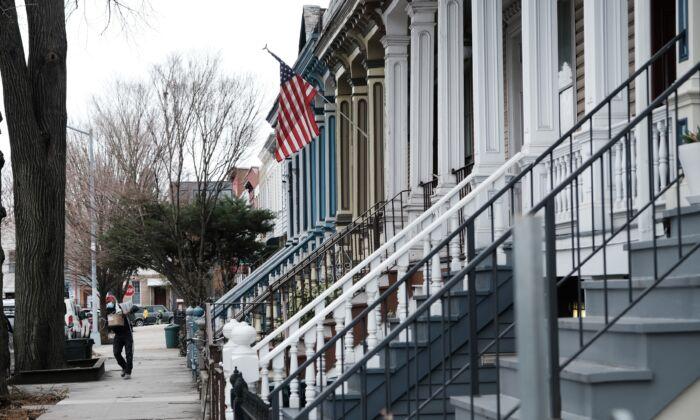Commentary
A U.S. housing market downturn will arrive, but it won’t be anything like 2008.
After an unreasonably hot period for home prices following the COVID-19 pandemic, fueled by a new suburban migration wave and historically low interest rates, pundits are calling for a major housing crash similar to the one experienced during the Great Recession of 2008.
Nationally, home prices rose 10.4 percent in 2020 and a record 18.8 percent in 2021, according to the industry benchmark S&P CoreLogic Case-Shiller National Home Price Index. That’s an extremely fast rise by any measure, and there are reasons to believe the music is about to stop. Mortgage rates nationwide have doubled since a year ago to more than 6 percent, inflation is hitting consumer pocketbooks, and the U.S. economy is staring at a recession.
During the Great Recession, home prices on average fell 33 percent from peak to trough. Will housing prices decrease by that magnitude this time?
Don’t bet on it.
The last financial crisis was caused by the real estate market, and real estate prices predictably tanked. It was a product of widespread insufficient underwriting of mortgage loans. Many subprime borrowers took out adjustable-rate mortgages which they then could not pay. This caused mass foreclosures. And with foreclosed homes flooding the market, home prices fell and mortgage borrowers became even more “underwater,” a phenomenon where the mortgage owed on the house exceeds its market value.
This time the fundamentals couldn’t be more different. Today, mortgage quality in general is higher. The average borrower’s FICO score is around 750 today, compared to the high 600-range back in 2009. What this means is that borrowers today are more creditworthy and should be able to pay their loans, on average, at a higher rate than in the last recession.
Today homeowners also have record home equity. U.S. borrowers have collectively banked $11 trillion in home equity even while leaving 20 percent minimum equity in their homes, according to Black Knight, a real estate industry data provider. Record home equity, intuitively, also means that borrowers have on average low leverage in their homes. Today, homeowners owe mortgages worth only 43 percent of their home value on average. In other words, loan-to-value ratio is at a record low of 43 percent.
Consumers are less likely to default on their mortgages today. There will likely be very few forced foreclosures at fire-sale prices, something that was prevalent during the 2008 crisis and caused a downward spiral in home prices.
Aside from borrower strength, supply-demand dynamics are also propping up prices. An ongoing housing shortage in many markets is constricting supply. Freddie Mac, the federal mortgage agency, estimates that the United States is short about 3 million homes. That’s the result of a decade of home underbuilding coming out of the 2008 crisis. Black Knight data indicates that only six out of 50 tracked cities have more home listings today than before the pandemic.
Why is this significant? It suggests that demand for homes continues to outstrip supply in most markets. And this imbalance is keeping home prices stubbornly high.
Anecdotal evidence also supports this data. In talking to several experienced realtors in Northern New Jersey, they state that while the number of bids far above asking price has decreased, homes are still selling quickly and often above asking price. Many prospective homebuyers today are Millenials just starting families and are fairly determined and price-inelastic, even with very high mortgage rates making monthly payments more expensive.
Nonetheless, some markets are indeed seeing price declines, especially in areas where prices have ascended and new home construction also skyrocketed (e.g. Austin, Texas).
National homebuilding company Lennar Co-CEO Richard Beckwitt rattled off a summation of “hot or not” of U.S. housing market on the homebuilder’s quarterly earnings call in June. In Lennar’s view, the top markets currently are in Florida, New Jersey, Maryland, Charlotte, Indianapolis, Chicago, Dallas, Houston, San Antonio, Phoenix, San Diego, Orange County, and Inland Empire (in California). These areas are still benefitting from tight supply and positive migration trends. Markets seeing moderate declines in home prices include Charleston, Myrtle Beach, Nashville, Atlanta, Colorado, Reno, Salt Lake City, Philadelphia, Virginia, and the California Bay Area.
As for markets where Lennar has seen significant sale price decreases? They include Los Angeles, Raleigh, Austin, Sacramento, Seattle, Minnesota, and Central Valley (in California).
Real estate is a hyper-local asset class driven by local economies, migration patterns, and recent new building activity. Homeowners need to keep abreast of their local markets, but pundits calling for 40 percent home price declines will be proven incorrect.





